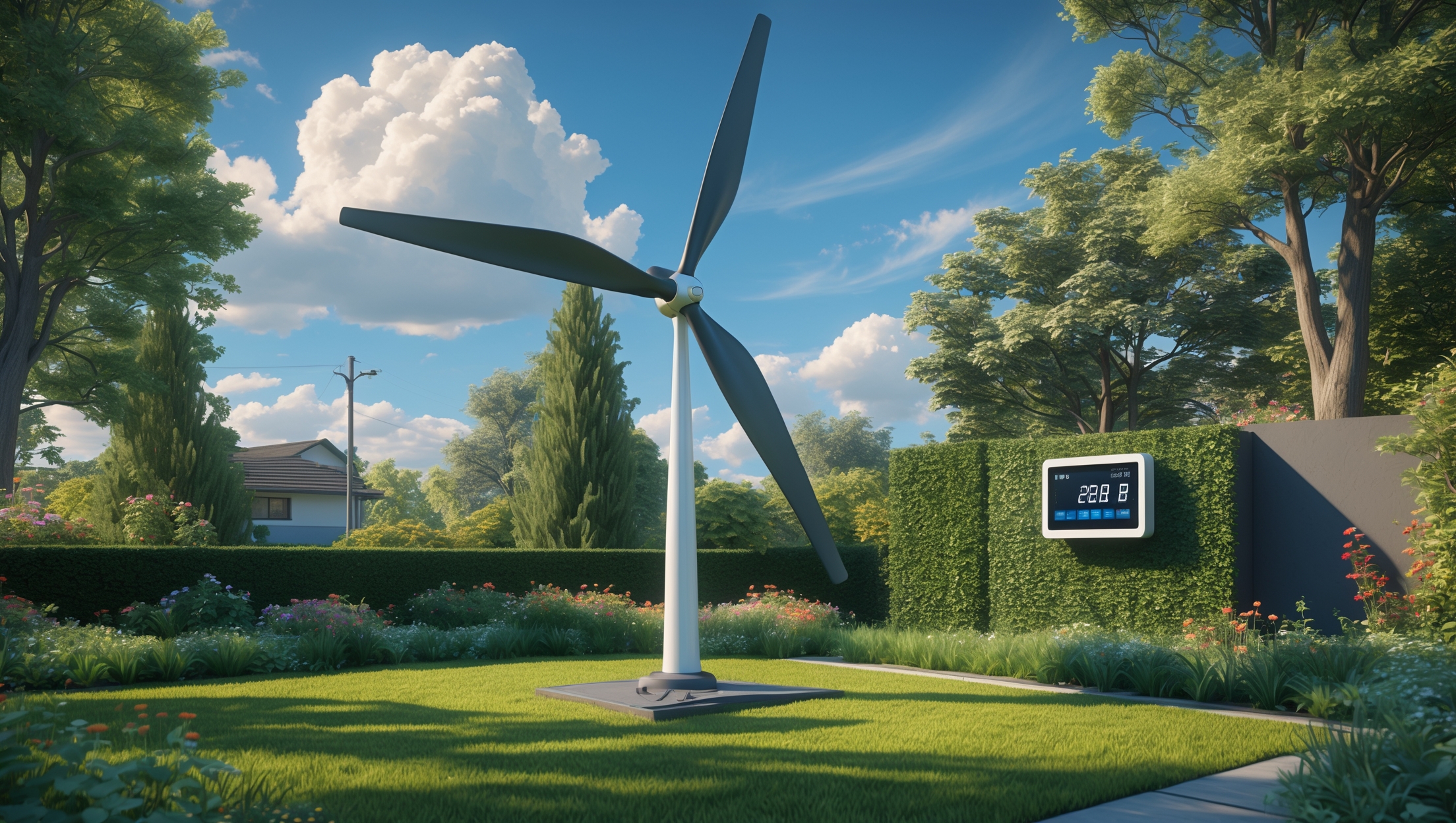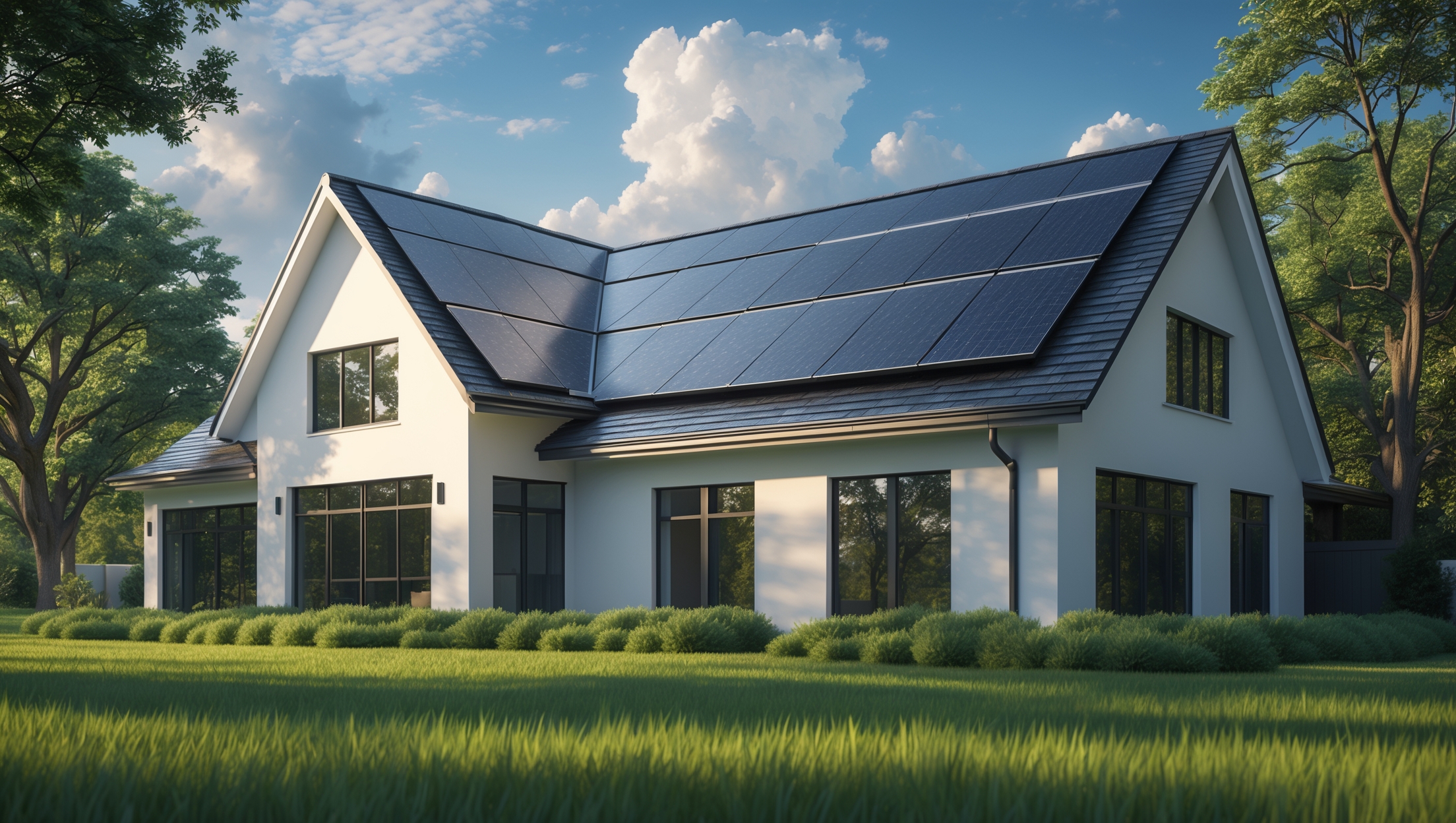Introduction: Why Permitting Matters for Small-Scale Home Wind Turbine Projects
Harnessing wind energy at home is an exciting way to reduce your carbon footprint and lower energy bills. Small-scale wind turbines, typically defined as those generating less than 100 kW, are increasingly popular for homeowners with suitable properties. However, before you can enjoy clean, renewable electricity from your own backyard, it’s crucial to navigate the maze of local permitting and compliance requirements. Neglecting this step can result in fines, forced removal of equipment, or even legal action. Permitting ensures your installation is safe, does not interfere with neighbors or local wildlife, and operates in harmony with the electrical grid. This guide offers a practical, step-by-step approach to securing the necessary permits for a home wind turbine installation, steering clear of common pitfalls and demystifying a process that often intimidates first-time builders. You’ll learn how to research local zoning, prepare compliant documentation, and communicate effectively with permitting authorities. Whether you’re planning a DIY install or working with a contractor, this roadmap will help you turn your wind energy ambitions into a legally compliant reality.
Step 1: Assess Local Zoning and Land-Use Regulations
Research Zoning Ordinances
Start by checking your local municipal or county zoning code. Zoning ordinances dictate what structures can be built, where, and in what manner. Key factors to investigate include:
- Permitted Use: Is wind energy generation allowed in your zoning district (residential, agricultural, etc.)?
- Setback Requirements: How far must the turbine be from property lines, structures, and public roads?
- Height Restrictions: Maximum allowable tower height, which often varies by neighborhood density.
- Noise Limits: Some ordinances cap decibel levels at the property boundary.
- Visual Impact: Are there aesthetic rules or limitations to preserve neighborhood character?
- Historic Districts: Additional restrictions may apply in historic or conservation areas.
Most municipalities publish zoning codes online. If not, visit your local planning office or call the zoning administrator for guidance.
Check for Homeowners Association (HOA) Rules
If your property is governed by an HOA, review covenants, conditions, and restrictions (CC&Rs). These can be more restrictive than city ordinances, sometimes banning wind turbines outright or mandating specific placement and design standards.
Step 2: Evaluate State and Federal Regulations
State Energy Codes and Renewable Energy Laws
Some states have laws that promote or restrict residential wind energy systems. Look for:
- Statewide Renewable Energy Acts: These may grant homeowners the right to install wind systems, within reasonable limitations.
- Building Code Amendments: Many states adopt the International Building Code (IBC) but may have amendments relevant to wind turbine structures, electrical safety, and fire prevention.
Federal Aviation and Environmental Considerations
- FAA Notification: If your turbine will be over 200 feet tall or near an airport, you must file notice with the Federal Aviation Administration (FAA).
- Wildlife Impact: If you live near protected habitats, a wildlife impact assessment may be required under the Endangered Species Act or Migratory Bird Treaty Act.
Step 3: Prepare a Site Plan and Supporting Documentation
Develop a Detailed Site Plan
Most permitting authorities require a site plan showing:
- Location of the proposed turbine and tower
- Distances from property lines, buildings, and utilities
- Existing structures and vegetation
- Access roads or paths for installation and maintenance
Site plans should be drawn to scale. Some jurisdictions accept hand-drawn plans, but computer-generated diagrams are preferred.
Gather Manufacturer and Engineering Data
- Product Specifications: Include turbine model, rated capacity, and cut-in wind speed.
- Structural Calculations: An engineer may need to certify that the tower and foundation comply with local building codes and can withstand local wind speeds.
- Noise and Shadow Flicker Reports: Some authorities require evidence that the installation won’t exceed noise or shadow impact thresholds.
Step 4: Submit Permit Applications
Building Permit Application
Submit your complete application package to the building department. Expect to provide:
- Permit application form
- Site plan and supporting drawings
- Engineering certifications
- Product literature
- Application fee (varies by jurisdiction; $100–$500 typical for residential projects)
Some municipalities offer online submissions, while others require in-person or mailed documents.
Electrical Permit
If your turbine will connect to your home’s electrical system, a separate electrical permit is usually required. This ensures all wiring, inverter connections, and grid tie-ins meet the National Electrical Code (NEC).
Special Use or Conditional Use Permits
If wind turbines are not a permitted use in your zoning district, you may need to apply for a special or conditional use permit. This process often involves public hearings and neighbor notification.
Step 5: Obtain Utility Interconnection Approval
Grid-Tied Systems
If you plan to connect your wind turbine to the utility grid (net metering), you must secure interconnection approval from your power provider. This process typically includes:
- Submitting an interconnection application (often online)
- Providing electrical diagrams and equipment certifications
- Proof of liability insurance (see your utility’s requirements)
- Signing an interconnection or net metering agreement
Some utilities charge a processing fee. Approval can take several weeks to months, so apply early in your project timeline.
Off-Grid Systems
For completely off-grid wind turbines, utility approval is not required, but you must still comply with local building and safety codes.
Step 6: Address Environmental and Neighbor Concerns
Conduct Noise and Wildlife Assessments
If required by your jurisdiction, hire a qualified consultant to conduct noise modeling and wildlife impact assessments. This is especially important in rural or ecologically sensitive areas.
Engage with Neighbors
- Share your plans and site drawings with neighbors early.
- Address concerns about noise, aesthetics, or shadow flicker.
- Consider simple mitigation strategies, such as tower screening or selecting a low-noise model.
Positive neighbor relations can prevent objections during the public comment period and smooth the permitting process.
Step 7: Schedule and Pass Inspections
Building and Electrical Inspections
After installation, schedule required inspections:
- Foundation and Tower: Inspectors verify proper installation and code compliance.
- Electrical: All wiring, disconnects, and connections to the home or grid must meet code.
Be present during inspections to answer questions and address minor issues quickly. Have all documentation on hand.
Final Approvals
Once your installation passes all inspections, you’ll receive a certificate of occupancy or final approval. Only then should you commission your wind turbine and connect it to your electrical system.
Step 8: Maintain Ongoing Compliance
Renew Permits and Agreements as Needed
Some jurisdictions require annual renewals or periodic inspections, especially for special use permits. Utilities may require periodic proof of insurance for grid-tied systems.
Report and Address Complaints Promptly
If neighbors or authorities raise concerns about noise, safety, or wildlife impacts, respond quickly. Document maintenance, noise levels, and wildlife observations as part of your compliance record.
Common Pitfalls and How to Avoid Them
- Skipping the Zoning Research: Never assume wind turbines are allowed—always check first.
- Incomplete Applications: Missing documents or unclear site plans are common causes of delay or rejection.
- Underestimating Permit Timelines: Approval can take weeks to months, especially if public hearings are required.
- Ignoring HOA Rules: HOA covenants can override city codes. Secure written HOA approval if needed.
- Poor Neighbor Communication: Most objections arise from lack of notice or information.
Conclusion: Turning Wind Energy Ambitions into Permitted Reality
Installing a small-scale wind turbine at your home is a rewarding project that can deliver clean energy and long-term savings. However, success hinges on careful attention to permitting and compliance at every stage. By thoroughly researching zoning and land-use rules, gathering detailed plans and documentation, and engaging proactively with both officials and neighbors, you can avoid the common pitfalls that derail many wind projects. Remember that each jurisdiction is unique—don’t hesitate to reach out to your local building department, utility, or a renewable energy consultant for tailored advice. Taking the time to secure all necessary approvals not only protects your investment, but also ensures your wind turbine operates safely and harmoniously within your community. With the right preparation and a methodical approach, you’ll be well on your way to joining the growing movement of homeowners generating their own sustainable power—and doing so with the full confidence that your installation is legal, safe, and future-proof. Embrace the process, and let the wind work for you.





If neighbors raise concerns about noise or the visual impact during the permitting process, what are some effective ways to address or mitigate those issues to keep the project moving forward?
If neighbors raise concerns about noise or visual impact, consider offering to use quieter turbine models and placing the turbine farther from property lines to reduce noise. Landscaping, such as planting trees or shrubs, can help screen the turbine from view. Sharing information with neighbors about the actual noise levels and design of modern turbines can also help address misconceptions and ease concerns.
Could you provide more specifics on what kind of documentation is typically required when preparing to apply for a home wind turbine permit? For example, are there standard forms or engineering plans that most municipalities request, or does it vary a lot by location?
Municipalities usually require a site plan showing the turbine location, property boundaries, and nearby structures. You’ll often need engineering drawings of the turbine and foundation, proof of compliance with noise and height limits, and sometimes neighbor notification forms. While some jurisdictions have standard application forms, requirements can differ significantly by location, so always check with your local permitting office for their specific checklist.
What kind of documentation should I prepare before contacting the permitting authorities? I’m thinking about handling this myself and want to avoid missing any key paperwork.
Before contacting the permitting authorities, gather detailed site plans showing your property and proposed turbine location, manufacturer specifications for the turbine, proof of property ownership or landlord permission, electrical diagrams, and a clear description of the installation process. You should also prepare any environmental or noise assessments if required by your local regulations. Having these documents ready will help your application move smoothly.
If my property is in a mixed-use zoning district, like agricultural-residential, are there extra permitting challenges compared to strictly residential zones when it comes to installing a small wind turbine?
In mixed-use zoning districts like agricultural-residential, you may encounter additional permitting steps compared to strictly residential areas. These districts often have unique requirements regarding land use, turbine height, setbacks, and noise. Local ordinances might also require extra reviews or public hearings. It’s important to check with your local planning department early to understand all specific rules and approval processes for your area.
If my property just barely meets the setback requirements but not the recommended height restriction for a turbine, what options do I have for requesting a variance or appealing local rules?
If your property meets setback requirements but not the recommended height restriction, you can usually apply for a variance with your local zoning board or planning department. This process often involves submitting a formal application, providing justification for your request, and sometimes attending a public hearing. Be prepared to demonstrate that your installation won’t negatively impact neighbors or the environment. Contact your local permitting office to get details on the specific steps and documentation needed in your area.
If I’m working with a contractor versus doing this as a DIY project, will the permitting and compliance process be any different, or do both approaches follow the same steps?
Whether you work with a contractor or take the DIY route, the permitting and compliance steps generally stay the same, as your project must meet local regulations either way. However, contractors are usually familiar with the process and may handle paperwork and inspections for you, which can make things smoother and less stressful. If you go DIY, you’ll be responsible for ensuring all requirements are met yourself.
How much time should I budget for getting all the necessary permits before I can actually start building? I want to avoid delays but I’m not sure what’s realistic for a small home wind project.
For a small home wind turbine project, it’s realistic to budget anywhere from 2 to 8 weeks to secure all necessary permits, depending on your local regulations. This includes time for submitting applications, waiting for reviews, and possible site inspections. It helps to contact your local permitting office early to check their current processing times and ensure you have all required documents ready to avoid unnecessary delays.
If I plan to work with a contractor for my small wind turbine install, is it typically their responsibility to handle the permitting process, or should I expect to research the zoning and prepare documentation myself as the homeowner?
Usually, reputable contractors are familiar with local permitting requirements and will handle much of the application and documentation process for you. However, it’s wise to confirm this before signing any agreement. As the homeowner, you may still need to provide property details, sign forms, or attend hearings, but most of the technical paperwork should be managed by the contractor.
You mentioned noise limits and visual impact rules—are there specific strategies or documentation you recommend preparing to address these concerns when applying for a permit?
To address noise limits, it’s helpful to include a manufacturer’s noise specification sheet and, if possible, a third-party sound analysis based on your property layout. For visual impact, photos or renderings showing how the turbine will look from different viewpoints can be valuable. You might also prepare a short report explaining why your chosen location minimizes visibility from neighbors and public spaces.
I’m feeling overwhelmed by all the local zoning steps, especially since my town’s ordinances are hard to decipher. Are there common pitfalls that first-time homeowners run into when researching permitted uses or noise limits?
Many first-time homeowners find zoning language confusing and sometimes miss details like height restrictions or required setbacks from property lines. Noise limits can also be tricky; they’re often measured at the property boundary, not the turbine itself. It helps to double-check with your local planning office for clarifications and keep detailed notes on any guidance they provide. Be sure to document all communications, just in case you need to reference them later.
The article mentions setback requirements and height restrictions. If my property doesn’t quite meet these standards, are there any common exceptions or variance processes for residential wind turbines?
Many local governments do offer a variance process for setback and height requirements involving residential wind turbines. This typically involves submitting a formal application and explaining why your property can’t meet the standard rules. The local planning board will review your case, sometimes hold a public hearing, and then decide whether to grant an exception. It’s worth contacting your local permitting office to ask about specific procedures and chances for approval.
The article mentions noise limits at the property boundary. How do local authorities typically measure and enforce these noise limits, and is there any flexibility if my neighbors are supportive?
Local authorities usually measure wind turbine noise at your property line using sound level meters, often during specific times of day. Enforcement happens if complaints arise or during regular inspections. While noise limits are set by regulations, having supportive neighbors can sometimes make enforcement less strict or lead to more flexibility, but it depends on your area’s rules. Always check directly with your local planning office for any possible exemptions or waivers.
You mentioned both DIY installs and working with a contractor. Are there advantages to having a professional handle the compliance paperwork, or is it manageable for someone new to permitting?
Handling compliance paperwork yourself is possible, especially if you enjoy research and attention to detail, but it can be time-consuming and sometimes confusing for first-timers. A professional contractor often has experience navigating local regulations, knows which permits to obtain, and can help avoid costly mistakes or delays. If you’re new to permitting and want a smoother process, having a contractor manage the paperwork can make things much easier.